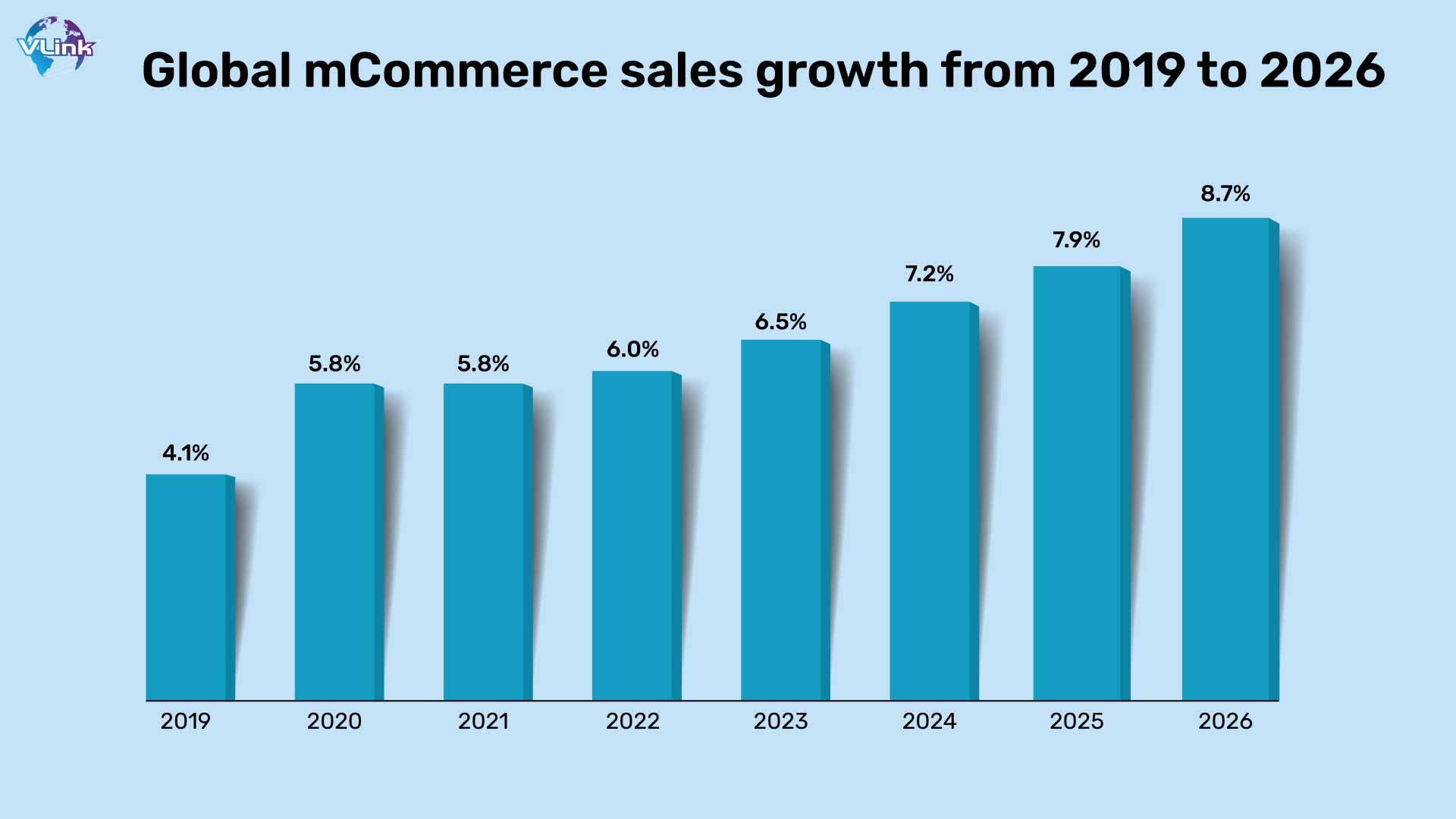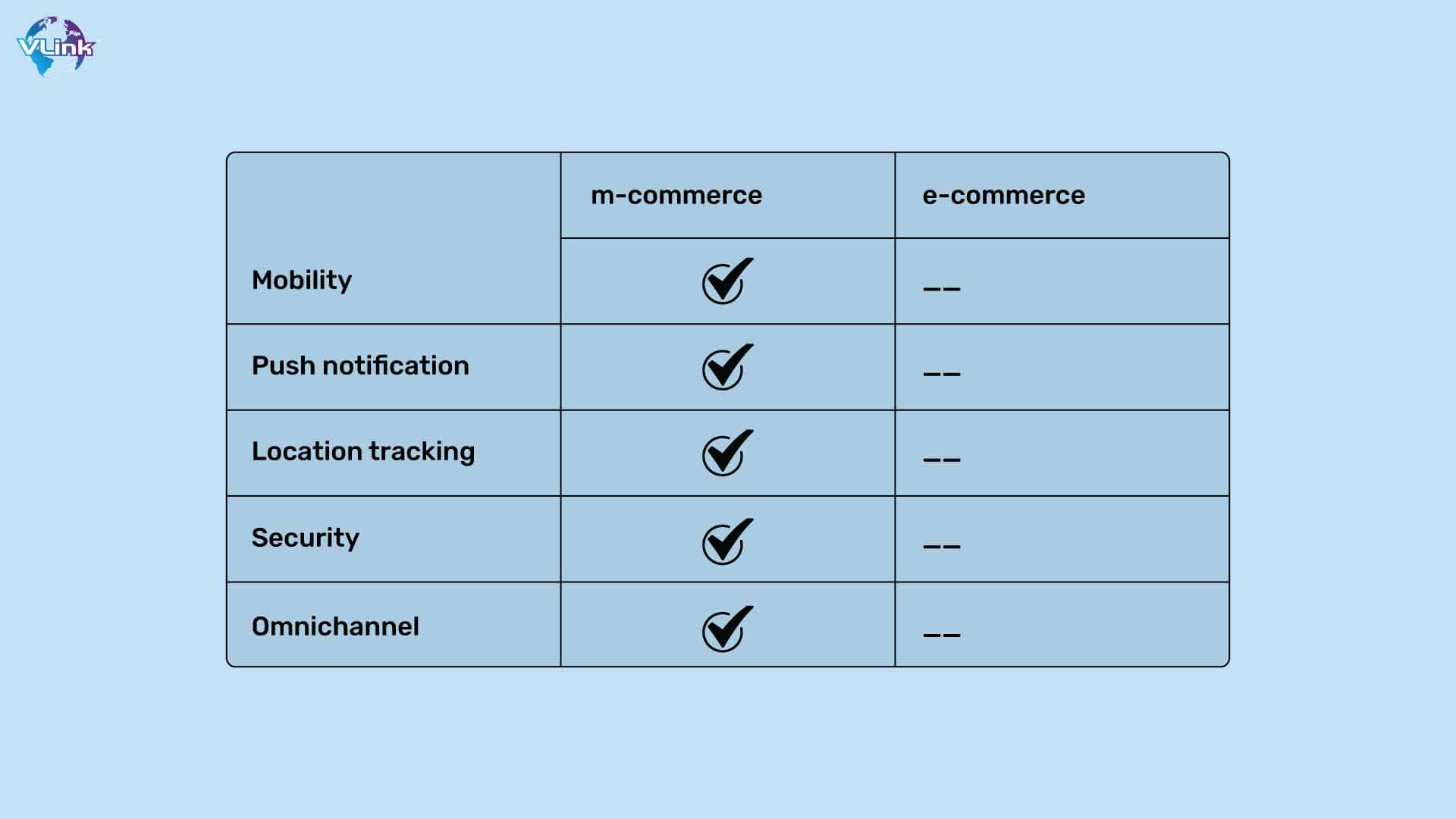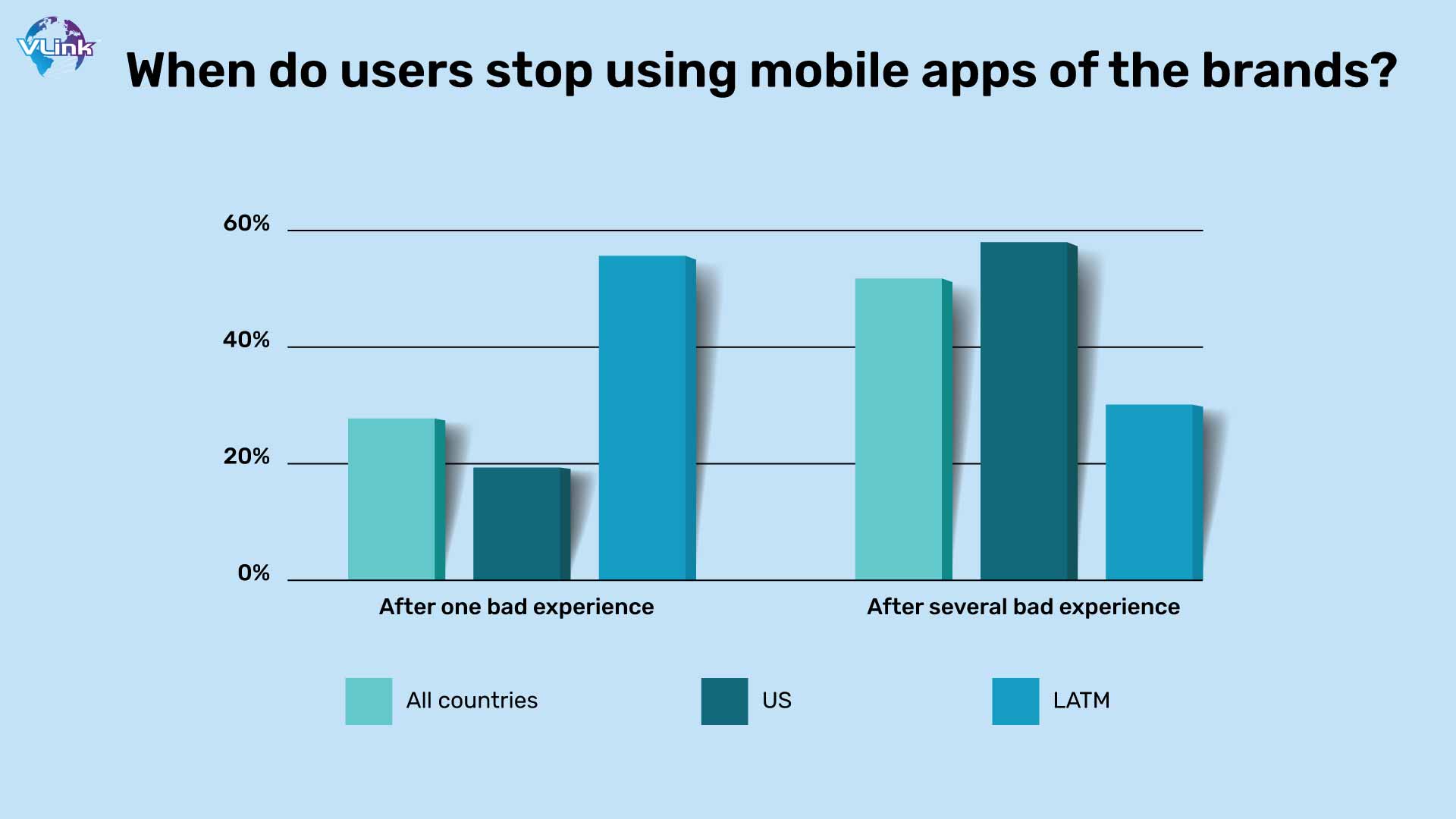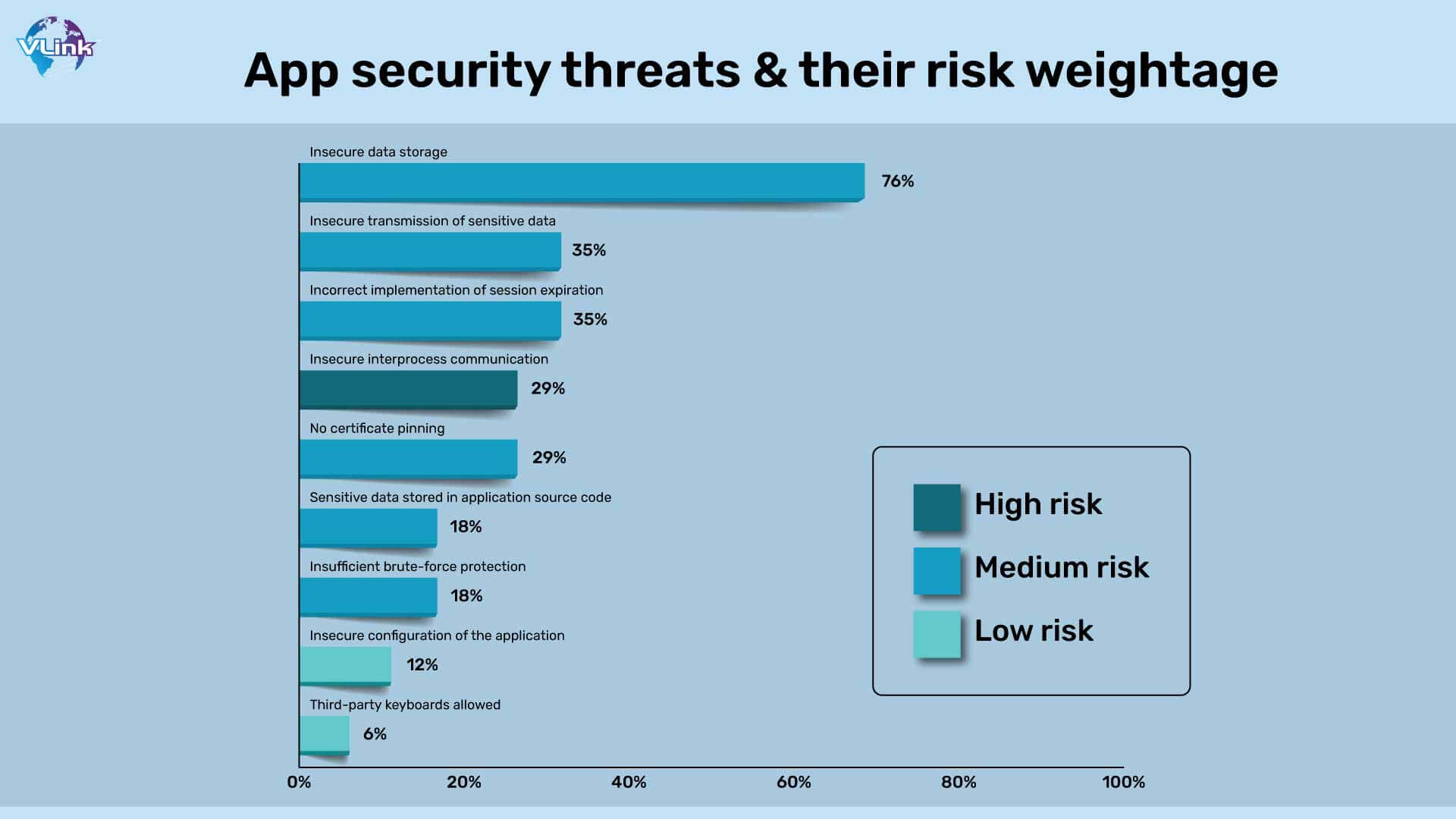In recent years, the realm of mobile commerce, often referred to as M-commerce, has experienced a remarkable and unparalleled expansion. According to a report published by Forbes, a staggering 30,000 websites succumb to hacking endeavors consistently. Consequently, each year bears witness to the compromise of thousands of M-commerce establishments due to cyber intrusions.
This burgeoning market exhibits exponential growth. Nonetheless, the mere existence of M-commerce applications does not guarantee their adoption by users. The patrons of these applications necessitate the assurance of various critical elements, with security being of paramount importance.
M-commerce applications are elegantly simple - you desire a product or service, and it promptly help you buy them at your fingertips. For e-commerce enterprises seeking to harness the potential of this ongoing trend, embarking on the journey of developing an M-commerce application represents an astute strategy.
Nevertheless, building a full-fledged mobile application extends beyond mere adaptation of an existing E-commerce website for compatibility with mobile platforms.
This blog includes various sections that will help to build and secure an mCommerce mobile app for your business. But first, let’s begin with an overview of what they are and how they are different from eCommerce.
What are mCommerce apps?
The transition from websites to mobile devices has transformed the e-commerce landscape into a platform for developing m-commerce apps. The convenience of online buying and selling, which was traditionally associated with websites, has now shifted to mobile phones.
In essence, m-commerce is a platform that facilitates the buying and selling of products or services through wireless network technologies. These wireless devices encompass tablets, smartphones, and other similar gadgets. This streamlined process significantly enhances the speed and convenience of online transactions.
 M-commerce essentially serves as an evolved iteration of e-commerce, offering the same array of services but in a more compact and mobile-friendly format, primarily accessible via smartphones.
M-commerce essentially serves as an evolved iteration of e-commerce, offering the same array of services but in a more compact and mobile-friendly format, primarily accessible via smartphones.
According to data from Insider Intelligence, the realm of retail m-commerce experienced a remarkable transformation in 2021, achieving an impressive $359.32 billion in sales. This marked a substantial increase of 15.2% when compared to the preceding year.
This astounding trajectory propels us into the predictive realm, foretelling that by the year 2024, the formidable mCommerce juggernaut will escalate to an astonishing $620.97 billion.
The crux of this numerical tale is rooted in the omnipresent ubiquity of smartphones, which have become an inseparable appendage of our quotidian existence. Their significance reverberates through the channels of commerce, primarily ushered in by the advent of digital payment paradigms.
How mCommerce is different from eCommerce?
The distinction between e-commerce and m-commerce based on the device used for transactions is well-explained. Mobile commerce indeed represents a more modern and expedited form of online shopping, with the widespread availability of mobile apps further enhancing the user experience.
Acknowledging the significance of having both a mobile application and a website for online stores is crucial, as it allows businesses to cater to a broader audience with varying preferences for accessing their services.
Focusing on mobile app development is evidently a strategic move for businesses, given the growing preference for mobile platforms. While replicating the success of market leaders may be challenging, staying attuned to trends in m-commerce app development is vital for staying competitive and meeting customer expectations.  In summary, the trends and figures you've presented underline the importance of prioritizing mobile commerce in today's digital landscape. This shift towards mobile platforms is indicative of the direction in which the industry is headed, and businesses would do well to align their strategies accordingly.
In summary, the trends and figures you've presented underline the importance of prioritizing mobile commerce in today's digital landscape. This shift towards mobile platforms is indicative of the direction in which the industry is headed, and businesses would do well to align their strategies accordingly.
Must-have features in mCommerce mobile app development
To make your mCommerce app stand out and be more successful than others, you should consider incorporating the following features:
Product Gallery
Present your products in an appealing way through a well-organized product gallery. High-quality images and clear descriptions can enhance user engagement and boost sales.
Personalization
Personalize the app experience based on user preferences, browsing history, and shopping behavior. Implement features like personalized recommendations, tailored search filters, and user-specific content.
Order Tracking
Provide order tracking functionality, allowing customers to monitor the status and location of their orders. Send email and push notifications to keep users informed about their deliveries.
Bug-Free Experience
Ensure your app is free from crashes and bugs. Conduct thorough testing and regular updates to maintain a smooth and reliable user experience. Crashes and bugs can deter users from using your app.
 Analytics
Analytics
Integrate data analytics tools to gather valuable data about user behavior, preferences, and interactions with your app. Use this data to refine your marketing strategies, promotions, and product offerings.
Search Bar
Implement a robust search bar with filters to help users quickly find the products they're looking for. Enhanced search functionality saves time and improves the overall shopping experience.
Multiple Payment Options
Offering secure payment option in your mCommerce app is a must. These options include digital wallets integration, credit/debit cards, netbanking, etc. These integrations will help the consumers to buy products seamlessly.
Offer Section
Create a dedicated section for discounts, promotions, and special offers. Highlight ongoing sales, vouchers, and deals to attract price-conscious shoppers and boost sales.
Customer Service
Provide responsive customer support options, such as live chat, chatbot assistance, or a calling facility. Ensure users can easily reach out for help with their queries or issues, enhancing their trust in your app.
By incorporating these features, you can enhance the user experience, increase customer satisfaction, and make your mCommerce app more competitive and successful in the market. Keep in mind that ongoing updates and improvements based on user feedback are also essential for long-term success.
mCommerce app development process
Creating a successful mCommerce (mobile commerce) app involves several key steps. Here are the steps you should follow and involve:
Idea and Market Research
Start by identifying a niche or a specific problem your mCommerce app will solve. You should conduct thorough market research to understand your target audience, their needs, and their preferences. Also, analyze your competitors and identify gaps in the market that your app can fill.
Business planning
Develop a comprehensive business plan that outlines your app's goals, revenue model, and marketing strategy. In this step, you will require to determine the budget as well as deadlines to get your product delivered.
Choose a Platform
Decide whether you want to develop your mCommerce app for iOS, Android, or both platforms (cross-platform). Consider factors like your target audience's device preferences and the resources available for development.
Choosing the tech stack
Choose a technology stack for app development. Popular options include native development (using Swift or Kotlin), cross-platform frameworks (like React Native or Flutter), or web-based mobile apps.
Designing and developing UI & UX
You might need to hire professional UI/UX designers to create an intuitive and visually appealing user interface. They will ensure to focus on providing a seamless and user-friendly experience for customers. Implementing responsive design will make your app work well on various screen sizes and orientations.
 Codebase building & Implementation
Codebase building & Implementation
This is a complex process where your mobile app development team will build frontend as well as backend of the mCommerce mobile app. Also, they will implement required APIs and necessary features to make the app complete.
Testing and Quality Assurance
Once the codes are implemented for every feature, section and API, professional testing and QA experts will identify and fix any bugs or issues. They will ensure the app functions smoothly on different devices and operating system versions. Also, it is necessary to test the payment process to guarantee the security of financial transactions.
Launch
After ensuring everything, it’s time to submit your app to the Apple App Store and Google Play Store (or relevant app stores). Now you need a marketing strategy for the app's launch, including press releases, social media promotion, and partnerships.
Analytics and Optimization
It’s beneficial to implement and use analytics tools to track user behavior and app performance. It will help you gather and analyze feedback from users to make necessary improvements. Being consistent with the needful app optimizations, you can enhance user engagement and conversion rates.
Building an mCommerce app is an ongoing process that requires attention to user needs, technology advancements, and market trends. Regular updates, improvements, and customer engagement are key to its long-term success.
Securing your mCommerce app with useful techniques
Ensuring the security of an mCommerce (mobile commerce) app is essential to protect user data and maintain trust. Here are steps to ensure the security of your mCommerce app:
Threat Assessment & Risk Analysis
Begin by identifying potential threats and vulnerabilities that your app may face. Consider the sensitive data you'll handle, including payment information, personal details, and transaction history. Conduct a risk analysis to prioritize security measures based on potential impact and likelihood.
Compliance with Security Standards
Comply with industry-specific security standards and regulations, such as PCI DSS (Payment Card Industry Data Security Standard) for payment processing apps and GDPR (General Data Protection Regulation) for data privacy.
Data Encryption
You need to encrypt sensitive data both at rest and in transit using strong encryption algorithms. This will result in the utilization of TLS (Transport Layer Security) for data transmission, protecting every information transferred between different sources.
Authentication & Authorization
Make sure to implement strong authentication methods, such as multi-factor authentication (MFA). Also, ensure to deploy proper authorization mechanisms to control access for different app features and data.
 Secure Payment Processing
Secure Payment Processing
To make sure payments and transactions are protected, you need to utilize established and secure payment gateways with encryption for financial transactions. Regularly audit and update payment processing components to stay current with security standards.
Regular Security Checkups
Perform routine security evaluations, such as penetration testing and vulnerability scans, to detect and rectify possible vulnerabilities. Ensure the security of APIs through the implementation of authentication and authorization methods and validate and sanitize input to safeguard against injection attacks.
User Data Protection
Implement strict data access controls and encryption to safeguard user data. Minimize the data you collect to only what's necessary for the app's functionality. Also, regular data backups can prevent data loss in the event of a security incident.
Incident Response Plan
Conduct regular code reviews and security audits to identify and address security weaknesses in your app's code. Develop a clear incident response plan that outlines the steps to take in the event of a security breach. This includes containment, investigation, and notification of affected users.
Secure Third-party Integrations
Carefully vet third-party services and libraries for security before integrating them into your app. Additionally, keep third-party components up to date to address potential security vulnerabilities.
By following these security practices and regularly reviewing and updating your app's security measures, you can significantly reduce the risk of security breaches in your mCommerce app.
Cost of building an mCommerce mobile app
Determining the expenditure involved in the creation of an mCommerce application is an intricate task, as it hinges on a multitude of variables. Predominantly, the extent and intricacy of the m-commerce app functionalities to be integrated wield the most substantial impact on the financial outlay.
Incorporating avant-garde technologies such as Augmented Reality (AR) and specific APIs can potentially command a substantial financial investment. The sophistication of the app's user interface constitutes the second most pivotal determinant: a more elaborate design necessitates a protracted duration for development and adaptation to diverse screen configurations.
Furthermore, the billing rate of the external app development entity, coupled with the quantity of specialized personnel enlisted, significantly contributes to the overall cost.
Should you seek quantitative insights, a fundamental Android mCommerce application might demand an investment ranging from $8,000 to $50,000. It is imperative to note that the corresponding iOS app's development cost is substantially higher.
Opting for an e-commerce application development firm assures that your investment will be worthwhile, as these teams possess a high level of competence and adept management. Conversely, should you opt for independent app developers, meticulous articulation of your ideas and vigilant monitoring of the app's progression becomes imperative.
VLink’s approach with mCommerce app development
Creating a professional mobile app that meets the specific needs of your target audience is the key to success. A simple, secure, and personal business transaction combined with important features such as a transparent subscription process, push notifications and mobile optimization. We strive to maintain and satisfy our customers.
At VLink, we help you build a successful mobile app business so that your business is profitable and stands out. Our experienced development team can also develop secure mobile business applications and investigate application vulnerabilities using external security audits.
So, make sure you give us every necessary requirement for your next app development project and rest we’ll assure you to give the desired outcome for your business success.
Frequently Asked Questions
mCommerce apps have a number of features that set them apart in the field, but their two most important roles are to support small businesses and give them more revenue from their products. These applications are more convenient to provide users with quality online shopping experience.
Ensure secure transmission of user data and payments using encryption protocols (e.g., HTTPS). Follow best practices for secure coding, regularly update libraries, and consider security testing (penetration testing) by professionals.
The cost and time can vary significantly depending on the complexity and features of your app. It's recommended to consult with app developers to get a precise estimate based on your specific requirements.







